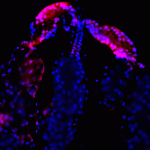Link to Pubmed [PMID] – 32385369
Sci Rep 2020 May;10(1):7750
Many emerging arboviruses of global public health importance, such as dengue virus (DENV) and yellow fever virus (YFV), originated in sylvatic transmission cycles involving wild animals and forest-dwelling mosquitoes. Arbovirus emergence in the human population typically results from spillover transmission via bridge vectors, which are competent mosquitoes feeding on both humans and wild animals. Another related, but less studied concern, is the risk of ‘spillback’ transmission from humans into novel sylvatic cycles. We colonized a sylvatic population of Aedes malayensis from a forested area of the Nakai district in Laos to evaluate its potential as an arbovirus bridge vector. We found that this Ae. malayensis population was overall less competent for DENV and YFV than an urban population of Aedes aegypti. Olfactometer experiments showed that our Ae. malayensis colony did not display any detectable attraction to human scent in laboratory conditions. The relatively modest vector competence for DENV and YFV, combined with a lack of detectable attraction to human odor, indicate a low potential for this sylvatic Ae. malayensis population to act as an arbovirus bridge vector. However, we caution that opportunistic blood feeding on humans by sylvatic Ae. malayensis may occasionally contribute to bridge sylvatic and human transmission cycles.

